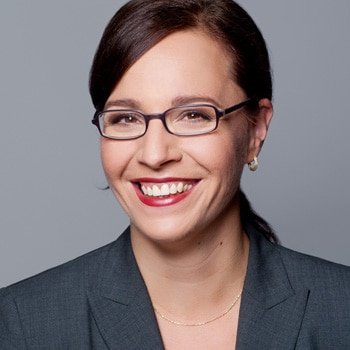Article

Shared building supply
A real alternative to the tenant electricity model?
42b EnWG-E, adopted in August 2023 as part of the "Solar Package I" has introduced a new instrument for local self-supply with solar power. The German government predicts that around 80,000 buildings will be able to use this new supply model. In this article, we highlight the advantages of this new instrument.
Solar Package I and the German government's photovoltaic strategy
Eleven fields of action for the accelerated expansion of photovoltaic systems in Germany were identified In the photovoltaic strategy of the Federal Ministry for Economic Affairs and Climate Protection (BMWK) published on May 5, 2023. To triple the annual expansion of photovoltaics from around seven gigawatts in 2022 to 22 gigawatts, it is planned, among other things, to introduce a model of "shared building supply", which is looking to enable shared self-supply from photovoltaic systems under facilitated conditions.
The draft of the “law to strengthen the expansion of photovoltaic energy generation”, which was passed as part of the Solar Package I in August 2023, now provides for a model of shared building supply in its Section 42b EnWG-E (German Energy Indus-try Law). The German government assumes that around 80,000 buildings could make use of this model.
Framework of the shared building supply
The model of the shared building supply will stand independently alongside the tenant electricity model that can already be uti-lized under current law. The draft bill defines the term "building electricity supply system" in Section 3 No. 20a EnWG-E as a "generating plant that produces electrical energy from solar radiation which is then consumed in whole or in part by participat-ing final consumers on the basis of a building electricity usage contract”.
According to the draft, the aim of the new model is to ensure that electricity from solar radiation can be made available to ten-ants within a building without remarkable bureaucratic expenditure. According to Section 42b (1) EnWG-E, a final consumer will be able to use the energy from a building electricity supply system if they are a tenant of rooms or the owner of rooms in the building. The model does not provide universal energy supply to participating final consumers. The electricity not produced by the building electricity supply system is purchased via electricity supply contracts between the final consumers and third parties. Should the building's electricity supply system generate more energy than is used by the participating final consumers, the sur-plus can be fed into the general supply grid.
A central attribute of the shared building supply model is that the supplier obligations of Sections 40 ff. EnWG are largely ex-cluded. This is supposed to enable the participation of energy system operators whose main business does not comprise the supply of electricity. In this context, the explanatory memorandum to the draft bill mentions that the shared building supply model is in line with the EU Renewable Energy Directive's aim of promoting decentralized participation models and removing disproportionate obstacles. This is probably correct, although it does not mean that the requirements of the Energy Sharing Directive have been fully implemented into German law.
Requirements for the shared building supply
Section 42b (1) EnWG-E stipulates three conditions for the application of the model. Firstly, there must be no transmission through the public grid, meaning that both the generation and consumption facilities must be located behind the same grid connection point. Secondly, the final consumer's electricity consumption must be measured every fifteen minutes. Thirdly, the final consumer must have concluded a building electricity usage contract with the operator of the building electricity supply system.
Under Section 42b (6) EnWG-E, a special feature applies to homeowners' associations: in certain cases, the conclusion of a build-ing electricity usage contract can be replaced by a resolution in accordance with the German Apartment Owners Law (Woh-nungseigentümergesetz, WEG). The requirements of Section 42b (1) to (5) EnWG-E remain applicable in this case, in particular in relation to the final consumer.
Building electricity usage contract
The minimum content of the building electricity usage contract is regulated in Section 42b (2) EnWG-E. The parties may enter into agreements that go beyond this minimum content. The building electricity usage contract is a contract under private law between the operator of the building electricity supply system and the participating final consumers.
The right to partial supply from the building electricity supply system must be agreed upon. The scope of use must be deter-mined by an allocation formula. Furthermore, it must be regulated whether and in what amount a fee is to be paid to the sys-tem operator for the partial supply. The price must be specified in cents per kilowatt hour. In addition, a provision must be made regarding the operation, maintenance, and servicing of the building electricity supply system.
Certain provisions of the EnWG are declared to be applicable to the contract by in Section 42b (4) EnWG-E. For example, Sec-tion 42a (3) 1 and 2 EnWG apply via this reference, meaning that the term of the building electricity usage contract is limited to a maximum of one year. The contract can be extended once by one year.
The draft legislation also contains specific requirements regarding the allocation formula which must be agreed upon in the building electricity usage contract, Section 42b (2) No. 1, (5) EnWG-E. The amount of electricity purchased by all participating final consumers is allocated mathematically. The calculated amount of electricity can be determined via two alternatives. The decisive unit is determined either by the quantity generated in the solar installation within a 15-minute time interval or the quantity consumed by all participating end consumers. Between the two variants, the lower amount is decisive. The final con-sumer is mathematically allocated a maximum of the amount of electricity consumed by them in the respective 15-minute in-terval. The contracting parties can choose between a static and a dynamic allocation formula. Section 42b (3) 3 EnWG-E clarifies that the free choice of electricity supplier may not be restricted in a building electricity usage contract, particularly regarding supplementary electricity procurement. In addition, Section 42b (4) No.3 EnWG-E refers to in Section 42a (2) 1 EnWG and thereby stipulates the prohibition of coupling the building electricity usage contract with a tenancy agreement for residential premises.
Informational obligations of the system operator
The operator of the building electricity supply system has special obligations with regards to information, especially towards the participating final consumers. According to Section 42b (3) EnWG-E, the operator must inform the final consumer that the sys-tem cannot always cover the electricity demand and that the end consumer will need to purchase additional electricity at the inception of the contract. If the building electricity supply system is unable to generate electricity for a significant period due to weather conditions or the time of day, the final consumer must be informed of this. He must also be informed when the sys-tem resumes operation. The operator of the building electricity supply system must also inform the responsible distribution system operator of the allocation formula agreed with the end consumer in accordance with Section 42b (5) EnWG-E.
The models in comparison
The models of tenant electricity and shared building supply can be distinguished from each other in particular by the fact that in the latter case, only the electricity generated by the building's own solar system is provided. In contrast to the supplier of ten-ant electricity, the operator of the building electricity supply is not obligated to provide supplemental electricity in addition to the electricity produced by the building electricity supply system. Therefore, a significant advantage over the tenant electricity model is that the typical supplier obligations are largely excluded for the system operator when providing the photovoltaic elec-tricity and no grid usage fees must be paid due to the lack of transmission through the public grid. In return, a tenant electricity surcharge in accordance with Section 21 (3) EEG is not granted in the context of shared building supply, Section 42b (1) 2 EnWG-E.
Outlook
The new shared building supply model is likely to be an attractive alternative to the tenant electricity model in future, particular-ly for homeowners' associations. However, it could also provide energy supply companies with incentives and opportunities for new supply models. It remains to be seen whether the model will be used to the extent predicted by the German government. In particular, the limited term of the building electricity usage contract will play a role in this context. Certain questions regard-ing the useable metering technology are yet to be clarified. According to the idea of the photovoltaic strategy, the electricity generated from the solar system should be allocated to the participants as part of the shared building supply using intelligent metering systems. Although Section 42b (5) EnWG-E now poses certain specifications for the metering technology as it must be possible to measure with quarter-hourly accuracy, further details on the type or number of metering devices are not specified. Nevertheless, the introduction of the model is to be welcomed overall. The new model could entail a real breakthrough for the expansion of photovoltaic systems in Germany.
Recommendations
Webcast Archive
Deloitte Legal Update
Real Estate
Including Acquisition, Disposal and Portfolio Management


